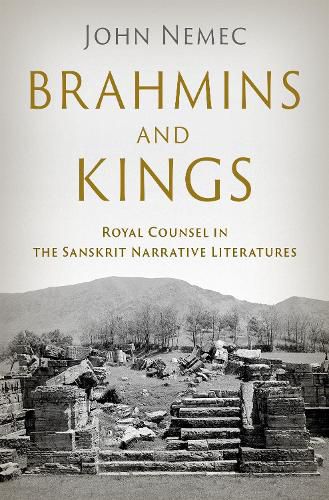Readings Newsletter
Become a Readings Member to make your shopping experience even easier.
Sign in or sign up for free!
You’re not far away from qualifying for FREE standard shipping within Australia
You’ve qualified for FREE standard shipping within Australia
The cart is loading…






Brahmins and Kings examines some of the most well-known and widely circulated narratives in the history of Sanskrit literature, including the Mah=abh=arata, the R=am=aya.na, Vi.s.nu'sarman's famed animal stories (the Pancatantra), Somadeva's labyrinthine Ocean of Rivers of Stories (the Kath=asarits=agara), Kalha.na's Chronicle of the Kings of Kashmir (the R=ajatara:ngi.n=i), and two of the most famous plays in the history of Sanskrit literature, K=alid=asa's Abhijn=ana's=akuntala and Har.sa's Ratn=aval=i. Offering a sustained, close, intertextual reading of these works, John Nemec shows that these texts all share a common frame: they feature stories of the mutual relations of k.satriya kings with Brahmins, and they depict Brahmins advising political figures. More than this, they not only narrate instances of royal counsel but also are composed in a manner that renders the stories themselves as instances of counsel. Based in the technical literatures on Hindu Law and on statecraft-the Dharma's=astras and the Artha's=astra and related worksDLthe counsel in question elaborates a model of action that synthesizes views found in both, recommending a kind of virtue ethic that suggests one may do well in the world by being good. Doing well involves succeeding in both worldly and otherworldly affairs; being good involves following Brahminical teachings and upholding the dharmic norms they regularly articulate in text. This ethic encompasses all human action and practice, defines the counsel offered by these texts, and seeks with it to engage the king, his princes, and queens across the spectrum of their subjective experience: intellectually, emotionally, humorously. Ultimately, this book argues that, just as the rulers in these narratives receive moral instruction, their audiences do, as well. By putting metaphorical flesh on the proverbial bare bones of doctrinal ideals and ideas, these texts seek to shape not just readers' thoughts but also their emotions and cultivated instincts, intending to transform their very way of engaging the world by immersing them in the dreamworld of stories.
$9.00 standard shipping within Australia
FREE standard shipping within Australia for orders over $100.00
Express & International shipping calculated at checkout
Brahmins and Kings examines some of the most well-known and widely circulated narratives in the history of Sanskrit literature, including the Mah=abh=arata, the R=am=aya.na, Vi.s.nu'sarman's famed animal stories (the Pancatantra), Somadeva's labyrinthine Ocean of Rivers of Stories (the Kath=asarits=agara), Kalha.na's Chronicle of the Kings of Kashmir (the R=ajatara:ngi.n=i), and two of the most famous plays in the history of Sanskrit literature, K=alid=asa's Abhijn=ana's=akuntala and Har.sa's Ratn=aval=i. Offering a sustained, close, intertextual reading of these works, John Nemec shows that these texts all share a common frame: they feature stories of the mutual relations of k.satriya kings with Brahmins, and they depict Brahmins advising political figures. More than this, they not only narrate instances of royal counsel but also are composed in a manner that renders the stories themselves as instances of counsel. Based in the technical literatures on Hindu Law and on statecraft-the Dharma's=astras and the Artha's=astra and related worksDLthe counsel in question elaborates a model of action that synthesizes views found in both, recommending a kind of virtue ethic that suggests one may do well in the world by being good. Doing well involves succeeding in both worldly and otherworldly affairs; being good involves following Brahminical teachings and upholding the dharmic norms they regularly articulate in text. This ethic encompasses all human action and practice, defines the counsel offered by these texts, and seeks with it to engage the king, his princes, and queens across the spectrum of their subjective experience: intellectually, emotionally, humorously. Ultimately, this book argues that, just as the rulers in these narratives receive moral instruction, their audiences do, as well. By putting metaphorical flesh on the proverbial bare bones of doctrinal ideals and ideas, these texts seek to shape not just readers' thoughts but also their emotions and cultivated instincts, intending to transform their very way of engaging the world by immersing them in the dreamworld of stories.